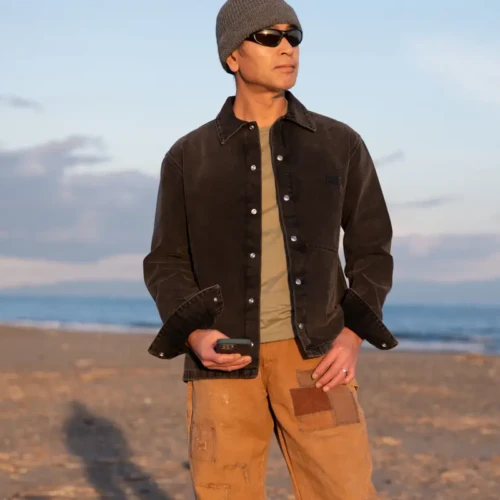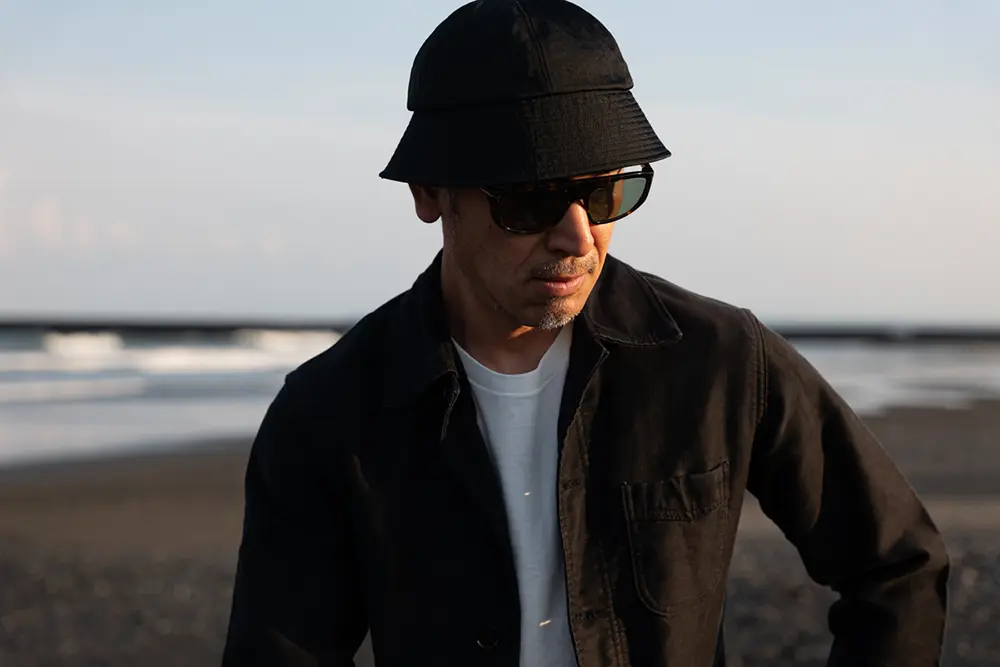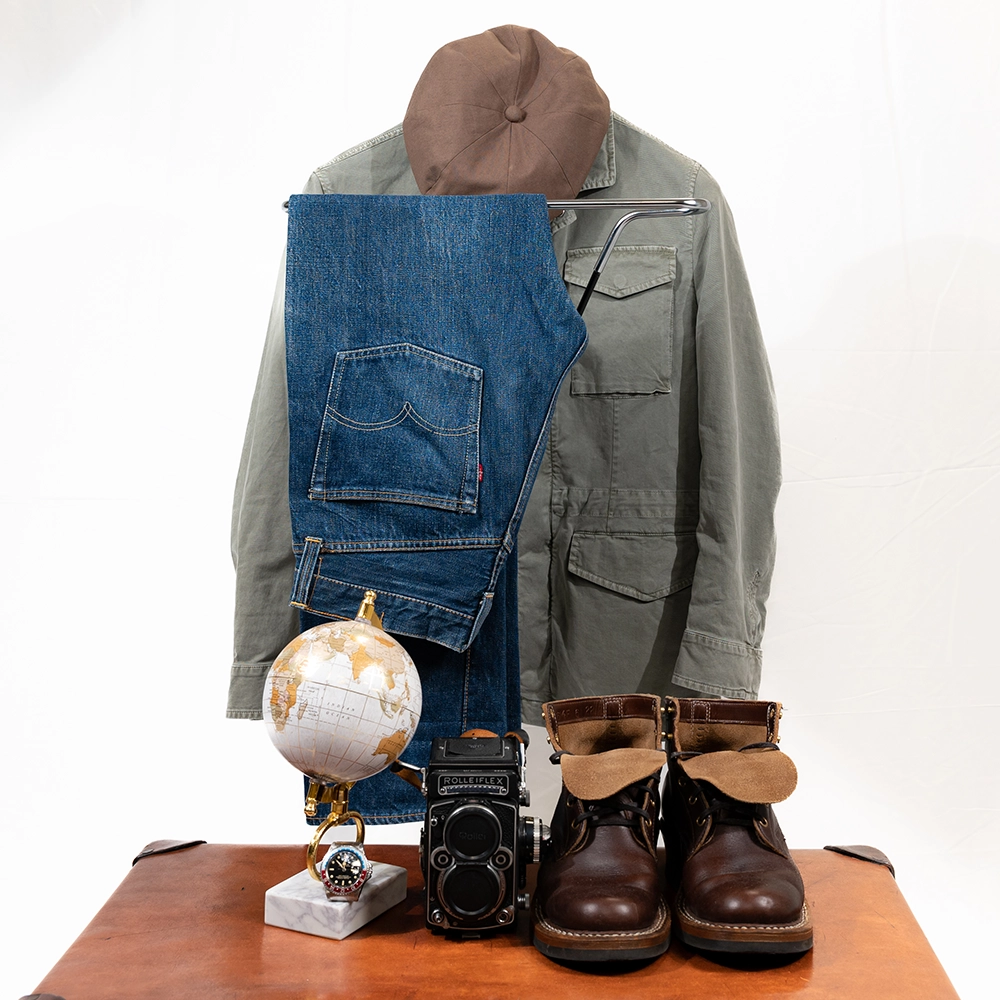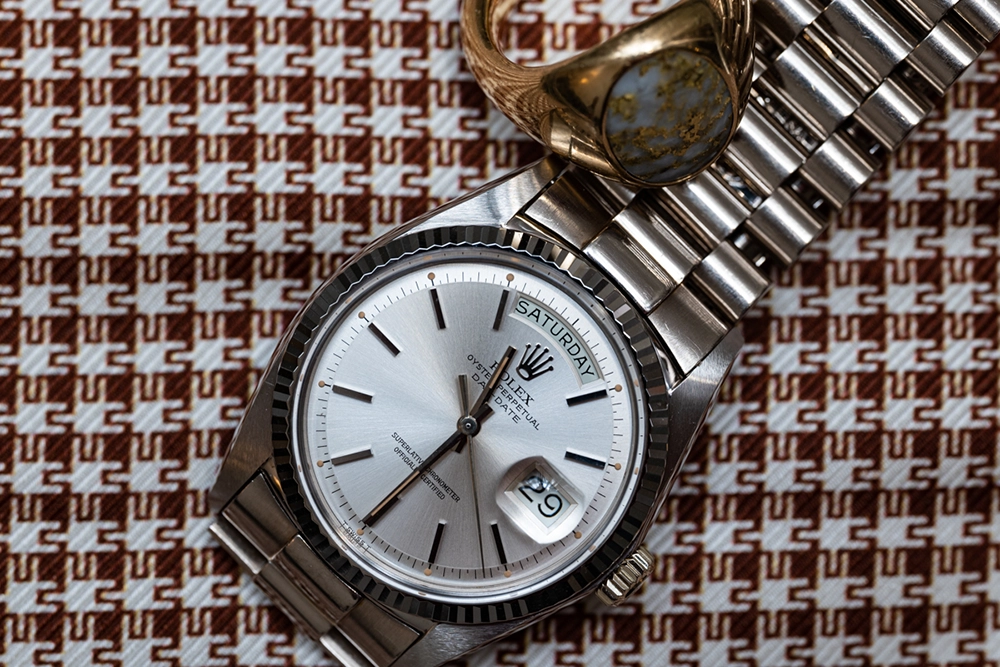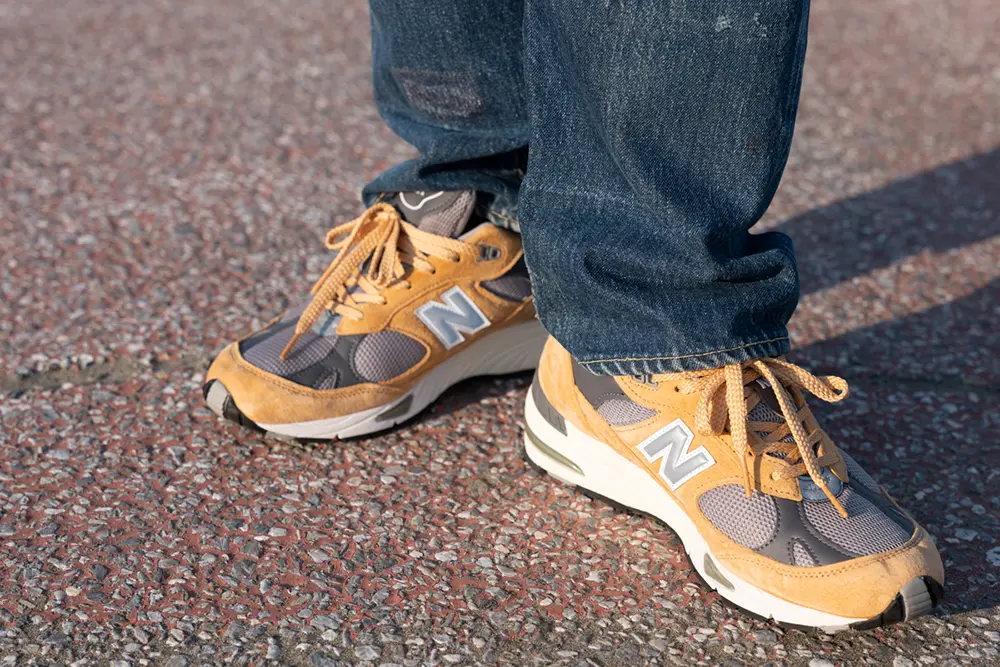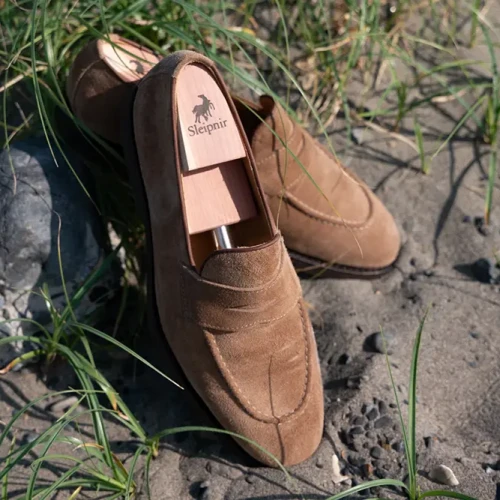IWC Mark11 RAF(Royal Air Force)
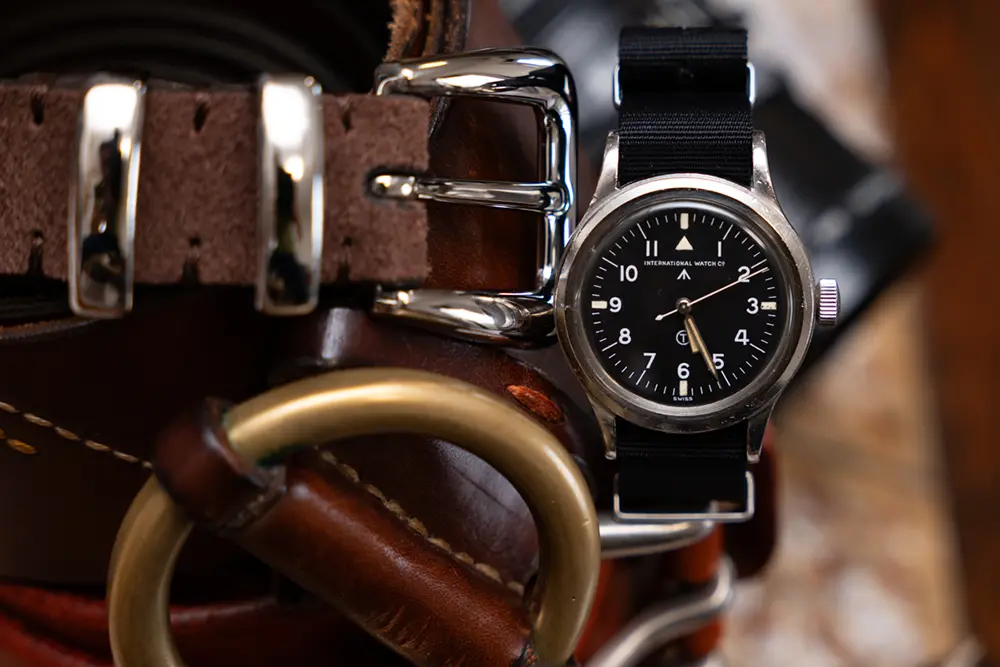
A genuine military watch, commonly known as a “Broad Arrow”, delivered to the Royal Air Force and owned by the Royal Air Force and issued to its personnel.

Introduction
IWC (INTERNATIONAL WATCH CO) was commissioned by the British Ministry of Defence in the late 1940s to produce the Mark 11, a genuine military watch with high military specifications. IWC (INTERNATIONAL WATCH CO) and Jaeger-LeCoultre were the two companies that received the order at this time, and the request was for an inner case to provide high precision, antimagnetic and dustproof properties as an aviation watch, and a black dial with Arabic numerals and luminescence for high legibility, so the two companies that had this technology at the time The company has been adopted by two companies that had this technology at the time. The watch is made for use in the Royal Air Force, so it is known as the RAF for Royal Air Force. The military watches delivered by 12 companies, which had been commissioned by the British Ministry of Defence to deliver military watches since wartime, were called the Dirty Dozen and had the Broad Arrow emblem on the dial. The IWC Mark 11 is a genuine Air Force watch, produced and delivered for aircraft by IWC, which had previously delivered the Mark 10 to the Ministry of Defence during the war.
Attractive military specifications
The Mark 11 watch introduced here was commissioned by the Royal Air Force in 1948 and produced by IWC (INTERNATIONAL WATCH CO.) as a military watch for aircraft. The features include magnetic resistance, dust resistance, water resistance, easy-to-read black dial with white Arabic numerals, nocturnal paints and high accuracy as an aviation watch, with a double structure (inner case adopted) for magnetic resistance and dust resistance.
My watch is marked with a T mark (tritium luminescent), but it is said to have been made with radium luminescence in early 1948 and replaced after 1962 at the request of the Royal Air Force. (This is speculation in this area.) My own was manufactured in 1948, and at that time it was radium luminescent, so it makes sense that the T mark was added as a later change.
The reason I became interested in this Mark 11 and actually got it and started using it is that it was originally made as a pilot’s watch and is very robust with military specifications, it has a simple black dial with high legibility and a NATO belt that fits very well (it is genuine, of course), and I originally I have always liked IWC watches and wanted one of the Mark series.
I was also attracted to the fact that the Mark 11 is a watch with many stories to tell, such as the adoption of the inner case, the story of how this technology was taken over by the later Ingenieur, the story of the Dirty Dozen, and the story of the Broad Arrow.
The Mark 11 was manufactured for a long time, from 1948 until 1981, when it was adopted by the Royal Ministry of Defence, and then manufactured for civilian use until 1984. It was delivered not only to the Royal Air Force but also to the Royal Australian Air Force, the Royal New Zealand Air Force and the South African Air Force, and was also made for civilian use, each with its own advantages. Production ceased for a time, but in 1994 the Mark 12 was introduced, and production has continued ever since, with the Mark 20 now in production. Of these, the Mark 11, which was actually made for military use, is a very attractive watch.
When I visited the shop where it was sold, I decided on it because of the responsiveness of the shop staff, the various conversations we had and the quality of the actual thing. When purchasing an antique or vintage watch, it is very important to want to buy from this person and this shop, and this Mark 11 also met those conditions.
The small 36mm diameter stainless steel case is just right, and the large crown, easy-to-read dial and NATO belt make it easy to wear, and I enjoy wearing it with jeans, military outerwear and even a T-shirt.
The so-called “Dirty Dozen” watches from the Second World War, the generation before my Mark 11, have a wide range of collectors, from those who own one of their favourites to those who have completed the so-called 12 watches produced by 12 different companies. If you are interested in IWC watches, I think you can find your favourite one and enjoy it.
IWC watches are not as well-known to the public as Rolex watches, so it is rare to be approached about watches.
Examples.
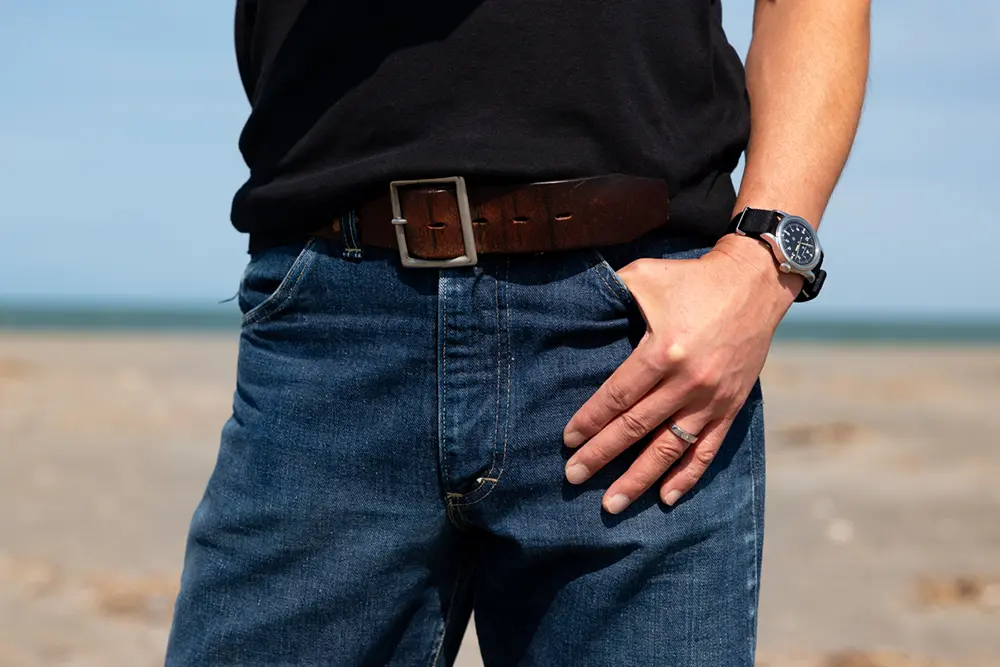

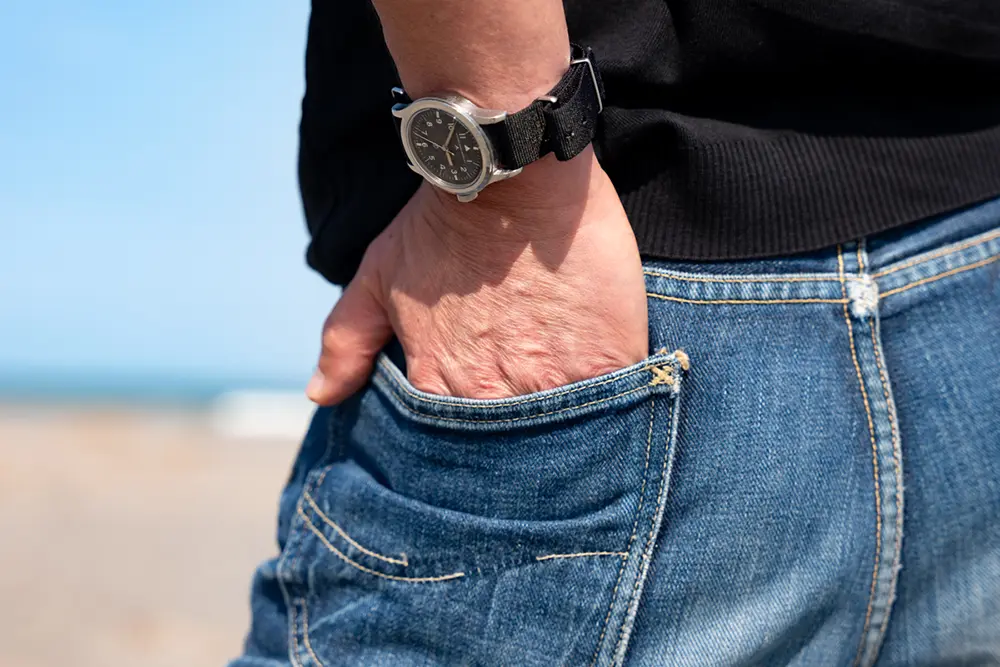
Details
1 Mark 11 (6B346)
2 Year 1948 Supplied later replaced with tritium luminescence
3 Case Stainless steel
4 Bracelet NATO strap (current black)
5 Windscreen Plastic windscreen (Plexiglas)
6 Dial Black Arabic dial with tritium luminescent hands (slightly but firmly luminescent)
7 Hand-wound caliper Cal. 89.
What we like.
- Simple three-hand manual winding is easy to use.
- Functional beauty of a real military watch.
- Easy to read dial made with legibility in mind.
- Ease of winding thanks to the large crown.
- User-friendly size of 36 mm diameter
- Universality of design that continues in later Mark series
- The ease of use of the NATO belt and its good balance.
Points of concern.
- Water resistance is not expected to be as good as current models.
- The winding moderation is very solid, although not as good as current products.
- Even considering the above problems, it has a unique atmosphere not found in current products, so it doesn’t bother me too much.
Conclusion
I have a IWC Mark 11, which I got because I wanted a military watch to go with it because I like military outerwear, and it has the functional beauty and story of a real military watch that was actually delivered to the British Ministry of Defence and supplied to the Royal Air Force. The fact that it is highly practical leads to attachment and I enjoy using it frequently, even though it is a very old watch that was supplied in 1948.
Shop
I bought my IWC Mark 11 RAF from Dazzling in Omotesando, Tokyo. This shop has operated shops in England and Japan in the past and has a British collector’s perspective on antiques. The watches we deal with are as original as possible, and we do not replace parts for the purpose of making them look better, and we mainly deal with watches that maintain their original condition as much as possible so that they can be used normally. The shop has inherited the European culture of antiques, where old things are carefully preserved.
The shop has a very sophisticated European atmosphere, but the staff are friendly and comfortable. The shop also handles very old and rare watches, and although there are concerns about later repairs, this shop can make a watch from scratch if parts are not available, so you can enjoy your beloved watch for a long time. The shop also has a very interesting stance, like the restoration of old European cars, which is not often seen in Japanese shops.
Naturally, the shop has a great eye for the watches it handles, with a consistent quality that ranges from rare and highly valuable watches to less expensive ones that can be enjoyed on a daily basis, and it also has a great selection of European values. The selection of watches as well as watches as fashion is also attractive and can be enjoyed by women as well as men.
When I bought my IWC Mark 11 RAF, the female staff were very kind and talked to me about fashion and my hobbies while I looked at the watches, making the experience a very enjoyable one.
If you like antique watches, such as Rolex, but not sports models, older watches, IWC, Omega, LeCoultre, Hamilton, Smith, Lemania Chrono, etc., you will never get tired of looking at them, as they are displayed with great taste. We recommend that you visit them when you are in Omotesando or Harajuku.
Antique watch specialty shop Dazzling
“Antique watch specialty shop Dazzling” Global shipping is not supported. Come to the shop when you come to Japan.

